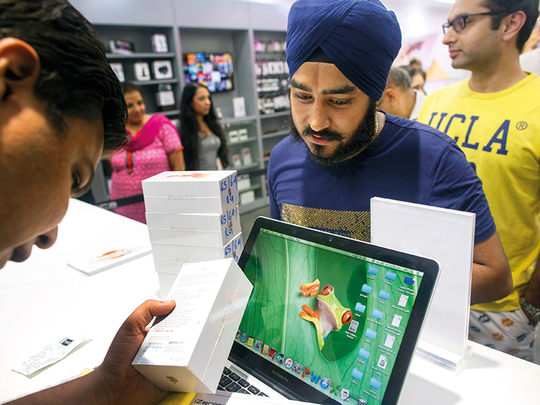
New Delhi: India is considering a proposal to increase import duties on a raft of products ranging from plastic to steel, as it seeks to curb a ballooning current-account deficit and prop up a sagging rupee, people familiar with the matter said.
Prime Minister Narendra Modi’s administration is planning to increase tariff on items including furniture, chemicals and mobile phone components. The Prime Minister’s Office (PMO) is planning a meeting in New Delhi as early as this week to review measures including curbs to curtail the trade gap.
Earlier measures such as raising import tariffs on 19 products — including on diamond jewellery — and easing some overseas borrowing norms, have as yet failed to revive investor confidence.
Fall in Indian rupee in 2018 over six straight months
The nation is trying to curb overseas shipments to prevent a further widening of the current account deficit and stem the fall of the rupee. The currency, which has been plummeting for six straight months in the longest stretch since 2002, is seen hitting 75 per dollar by year-end, according to median of 10 analysts surveyed by Bloomberg.
The trade deficit represented 2.4 per cent of gross domestic product, more than the 1.9 per cent seen in the March quarter, according to latest data from the central bank.
Meanwhile, India’s gold imports in September dropped more than 14 per cent from a year ago as a rally in local prices due to a depreciating rupee reduced demand in the world’s second-biggest consumer of bullion, provisional data from precious metals consultancy GFMS. The drop in demand from Indian importers could weigh on global prices, which have dropped 8.8 per cent so far this year.
Trade deficit as percentage of GDP in second quarter
India’s gold imports in August nearly doubled from a year ago to 85.7 tonnes to hit their highest level in 15 months, as lower prices prompted manufacturers to stock up for a jewellery exhibition.
Lower imports could help the South Asian country reduce its trade deficit and support the rupee, which hit a record low this week. “In August, demand was good but it fell in September due to higher prices,” said Asher O., managing director of Malabar Gold and Diamonds’ India operations.
The Indian rupee has fallen almost 14 per cent in 2018, lifting local gold prices to Rs31,531 per 10 grams earlier this week, the highest level in nearly five months.
But jewellers were carrying ample inventory from August and retail demand was also weak due to the “Shradh” period — a fortnight for paying homage to ancestors — in September, said a Mumbai-based dealer with a private bullion importing bank.
“In October, again imports will rise due to festivals,” said Bachhraj Bamalwa, a bullion dealer based in Kolkata, formerly the Chairman of the All India Gems and Jewellery Trade Federation.












